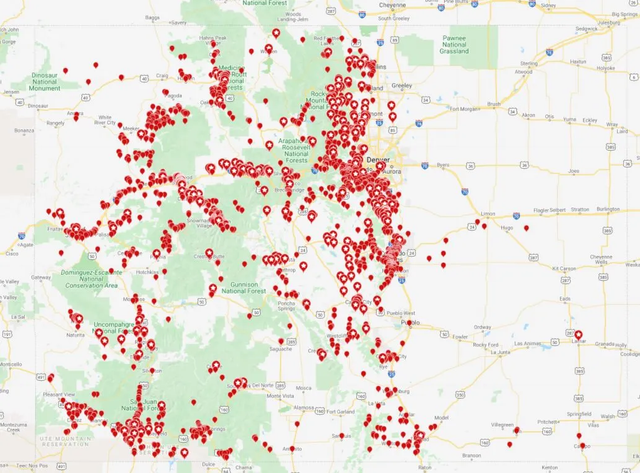Colorado wildlife officials warn of increased bear activity as fall weather approaches
State wildlife officials are warning residents and visitors about an uptick in bear activity as the weather in Colorado cools, especially in the foothills and high country.
Bears across the state are preparing for winter hibernation, which means they'll be packing on the calories and looking for as much food as they can find. As a result, Colorado Parks and Wildlife officials are urging people to minimize bears' easy access to food and trash, especially after an above-average number of bear sightings and conflicts in 2024; the majority of those conflicts involved bears trying to access human food sources. In some areas, like Mesa and western Garfield Counties, bear reports doubled from 2023 to 2024, according to CPW.
"Bears are biologically driven to seek out the highest calorie food sources they can get while using as little energy as possible," CPW Area 15 Wildlife Manager Adrian Archuleta, who oversees La Plata and surrounding counties, said last year. "To reduce conflicts with bears, people must remain vigilant year-round. Please use bear-resistant containers for your trash, lock your vehicles, lock your homes and windows, close your garage doors, and remove fruit that has fallen on the ground."
Even in the areas around Rocky Mountain National Park, where there is a lower population of black bears, the sightings have increased. According to Yellow Wood Guiding, a wildlife tour company out of Estes Park, there are only 20-30 adult black bears estimated to live in the park, but sightings tend to increase in August and September as choke cherries in the area ripen.
Around half of the 4,644 bear sightings and conflicts reported in 2024 occurred in August, September, and October, CPW said.
Colorado doesn't have grizzlies or polar bears, only black bears, which are more docile, but they can be territorial, protective of cubs, and food aggressive. The overwhelming majority of bear sightings and interactions have occurred along the Front Range and west in rural areas, but they have been seen in the Denver metro area and as far east as Campo and Lamar, as well as in Kansas.
As bears start to pack on weight, and as they succumb to increased habitat loss due to development, they will venture increasingly into urban and suburban areas. In recent years, that's included a bear wandering onto the University of Colorado Boulder campus, a bear sighting in the cities of Lone Tree and Aurora, the closure of a popular trail near Silverton, and one getting itself locked in a car in Evergreen. Those are just three of thousands of encounters in Colorado alone.
CPW urges people to be "bear aware," and follow best practices for living in areas that bears call home, such as:
- Securing trash cans and dumpsters
- Removing bird feeders
- Closing garage doors even when at home
- Cleaning and locking your car and house doors
- Call CPW when bears become a nuisance
Bears try to consume about 20,000 calories per day as they prepare for hibernation. For context, hot dog-eating champion Joey Chestnut consumes about that many calories when he eats 60 to 70 hot dogs in a single competition. CPW compared it to a fast food order of 20 chicken sandwiches, 10 large orders of French fries, 10 soft drinks, and 10 milkshakes.
"CPW's recommendations to reduce conflicts with wildlife, including bears, only work if homeowners and visitors consistently follow the suggestions," CPW Area 13 Wildlife Manager Sean Shepherd, who oversees Chaffee, Fremont, and Lake Counties, said. "More people live in rural areas and raise a variety of livestock. We encourage hobby producers to secure and protect their animals. A small amount of prevention will reduce conflicts and safeguard livestock."
For more information from CPW about living around bears, click here.


